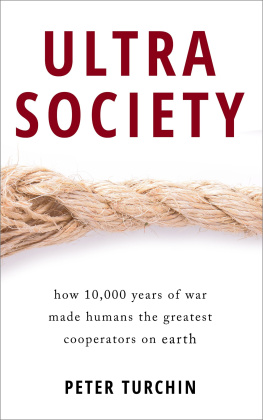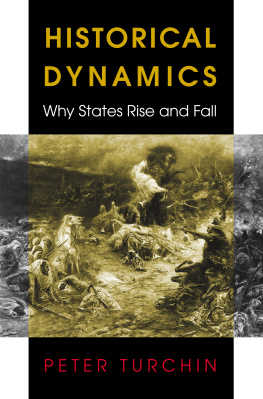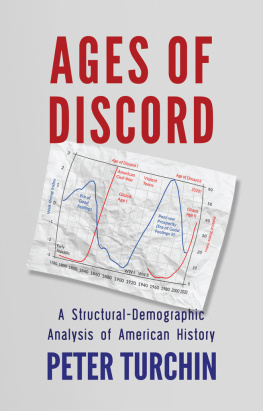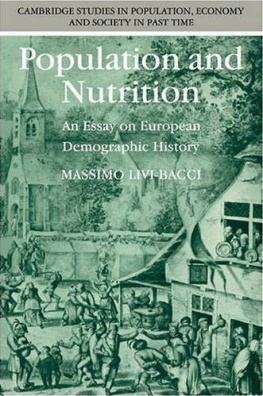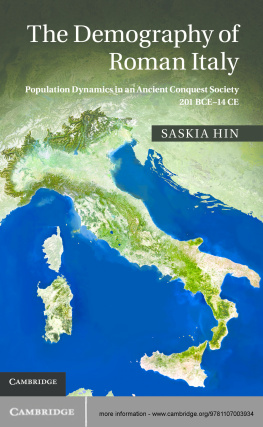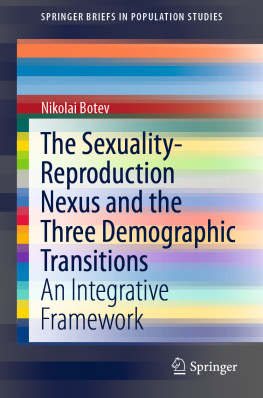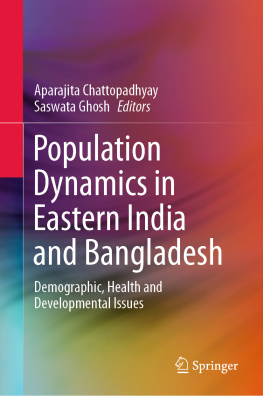The authors wish to thank Adam Burke for editorial comments on . Walter Scheidel and Nathan Rosenstein offered many useful comments on the Roman chapters. Our greatest debt of gratitude, however, is to Jack Goldstone. Not only was he responsible for setting forth the theoretical framework on which our book builds, he read the whole manuscript and provided a lengthy and extremely useful critique that made the resulting work much better.
Chapter 1
Introduction: The Theoretical Background
1.1 Development of Ideas about Demographic Cycles
The modern science of population dynamics begins with the publication in 1798 of An Essay on the Principle of Population by Thomas Robert Malthus. Malthus pointed out that when population increases beyond the means of subsistence, food prices increase, real wages decline, and per capita consumption, especially among the poorer strata, drops. Economic distress, often accompanied by famine, plague, and war, leads to lower reproduction and higher mortality rates, resulting in a slower population growth (or even decline) that, in turn, allows the subsistence means to catch up. The restraints on reproduction are loosened and population growth resumes, leading eventually to another subsistence crisis. Thus, the conflict between the population's natural tendency to increase and the limitations imposed by the availability of food results in the tendency of population numbers to oscillate. Malthus's theory was extended and further developed by David Ricardo in his theories of diminishing returns and rent (Ricardo 1817).
According to the Malthusian argument, the oscillation in population numbers should be accompanied by systematic changes in certain economic variables, most notably food prices. Fortunately, data on prices are reasonably abundant in historical sources, and it is possible to construct time series documenting price fluctuations over very long periods of time. Compilations of price trends appeared as early as the sixteenth century. For example, Ruggiero Romano (1967) reports that a time series of grain prices between 1500 and 1593 appeared in an appendix of La Patria del Friuli Restaurata by Jacopo Stainero, published in 1595 in Venice. The data on prices in medieval and early modern England were made available to historians by Thorold Rogers (1862). By the 1930s the empirical material had accumulated to the point where it became very clear that European prices had gone through a number of very slow swings between 1200 and 1900 (Simiand 1932, Griziotti-Kretschmann 1935, Abel 1980).
A most important and lasting contribution was Wilhelm Abel's Agrarkrisen und Agrarkonjunktur, the first German edition of which was published in 1935. Abel compiled a rich data set containing time-series information about prices, wages, rents, and population movements in Western and Central Europe from the thirteenth to the twentieth centuries, ensuring that the empirical importance of his work would remain high to this day. The most striking pattern to emerge was the wavelike movement of grain prices (expressed in terms of grams of silver). There were three waves or secular trends (Abel 1980:1):
. An upward movement during the thirteenth century and early fourteenth century, followed by a decline in the late Middle Ages
. Another upsurge in the sixteenth century, followed by a decline or apparent equilibrium (depending on the country) during the seventeenth century
. A third increase during the eighteenth century, followed by irregular fluctuations during the nineteenth century, eventually converging to an early twentieth-century minimum
The twentieth century saw another (fourth during the last millennium) period of price inflation (Fischer 1996).
On the basis of the observed patterns, Abel argued that the fluctuations in the circulation of money could not adequately explain the long-term trends in the price of grain. By contrast, population moved more or less in the same direction as the food prices and in an inverse ratio to wages (Abel 1980:29293). Abel concluded that the Malthusian-Ricardian theory provided a better explanation of the data than the monetarist theory. Furthermore, the Malthusian-Ricardian theory predicted that an increasing population would result in a specific progression of effects. Rents would rise first, with grain prices lagging behind rents, the price of industrial goods lagging behind grain prices, and workers wages bringing up the rear. The evidence showed that this was precisely what happened (until the whole system was dramatically changed in the nineteenth century).


